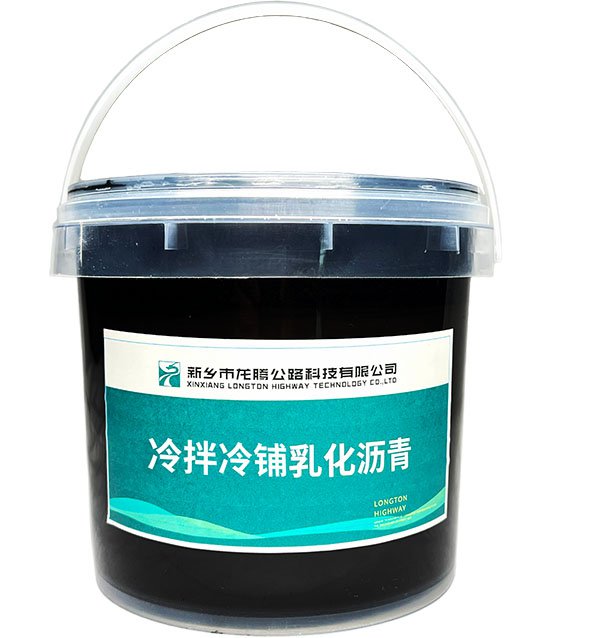1. Introduction to Cold Mixed and Cold laid Emulsified Asphalt Products
Cold mixed and cold laid emulsified asphalt is a new type of asphalt mixture that is mixed and constructed at room temperature, mainly composed of emulsified asphalt, additives, and aggregates. Emulsified asphalt is a kind of asphalt lotion of oil in water (O/W) type, which disperses viscous asphalt into water containing emulsifier and stabilizer in the form of droplets through thermal melting and mechanical action. This lotion has low viscosity and good fluidity at room temperature, and can be used at room temperature, or together with cold and wet stones.
2. Construction method of cold mixed and cold laid emulsified asphalt
The construction method of cold mixed and cold laid emulsified asphalt is relatively simple, which does not require heating of mineral materials and asphalt, greatly reducing fuel consumption and harmful gas emissions. The specific steps include:
(1) Mixing: Mix emulsified asphalt, additives, and aggregates at room temperature.
(2) Construction: The mixed material can be directly used for construction without heating.
(3) Maintenance: The mixture solidifies at room temperature and gradually increases in strength as moisture evaporates.
3. Cold disguised and cold laid emulsified asphalt application scenarios
Cold mixed and cold laid emulsified asphalt is widely used in road engineering, mainly for the construction of prime coat, tack coat, and seal coat
(1) Permeable construction: Spray emulsified asphalt on the base layer (such as cement stabilized crushed stone base layer) to seal the surface of the base layer, prevent moisture from rising, and enhance the bonding strength between the base layer and the surface layer.
(2) Adhesive layer construction: Spray emulsified asphalt between layers of multi-layer asphalt pavement structure to ensure the adhesion between the upper and lower layers and prevent interlayer sliding.
(3) Seal layer construction: divided into upper seal layer and lower seal layer. The upper seal layer protects the road surface, and the lower seal layer protects the base layer to prevent rainwater erosion.


